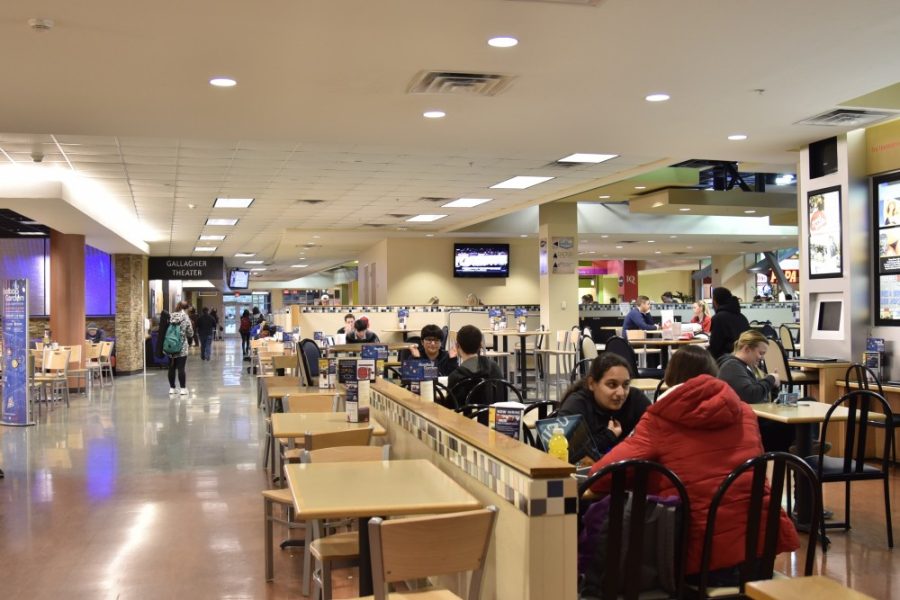The ever-resilient University of Arizona essential workers have risen to the challenge and become the unsung heroes in the university’s stand against COVID-19.
The University of Arizona’s Facilities Management and Student Unions have a combined staff of nearly 1,000 full-time essential workers who work diligently for the good of the campus community despite the risks posed to themselves in this pandemic.
The university has in turn set up comprehensive protections and procedures to keep these essential employees safe, and thus far, these protections have yielded positive results.
The Facilities Management team reported zero COVID-19 cases contracted on campus, according to the Assistant Vice President of Facilities Management Chris Kopach, and around three full-time workers tested positive within the Student Unions, according to the Director of the Student Unions Todd Millay.
RELATED: What experts say about mental health during times of social and political tension
Emily Romero, the dining retail manager at the Student Unions, walked through what the typical day looks like for her and her workers.
Before coming into work, each employee must pass a Wildcat Wellness Check. Then, dawning masks and sometimes face shields provided by the Student Unions, employees can enter the building and get a temperature check.
Once cleared, workers may enter the workspace where they wash their hands and are given access to gloves if they choose to wear them.
Guests are required to wear masks, as is consistent with the rest of campus protocol, and any non-compliance is immediately confronted by the team members in order to keep the work environment safe.
Kopach said, “first and foremost, the safety of all our staff is important,” and that in terms of protective measures implemented, “the list goes on and on.”
The buildings have been prepared to optimize physical distancing so that staff can engage in social distancing.
“We have 400,000 surgical masks on hand,” Kopach said. “We partnered with Pima County Emergency folks. We also have over 4,000 N95 masks.”
According to Kopach, Facilities Management has increased air conditioning MIVR filtration filters from seven or eight ratings to ones with 13 ratings so as to further filter the air for coronavirus particles.
They have also purchased 300-gallon tubs of Oxivir disinfectant which have been used to disinfect the campus and create a sterile work environment.
RELATED: UA Honors College to propose almost double yearly fee increase
“We’ve made sure the training of all our staff, way up front, that they were trained on the proper procedures of cleaning any of the COVID cases,” Kopach said.
Facilities Management has a team of “germ busters” who have been specially trained to clean up COVID-19 cases.
With this job comes increased risk, but these workers are equipped with “a full isolation outfit,” Kopach said.
Additionally, he said that the germ buster crew is volunteer-based so no one is forced into the more dangerous role.
“Quite frankly, our staff from day one have stepped up,” Kopach said.
RELATED: Election 2020: A last-minute guide to voter registration
In the Student Unions, Millay said that “everything we’re doing is based around contactless food service and what I would call dispersion of density.”
In work environments where close proximity is necessary, additional air filters have been installed and workers are required to wear an additional face shield, according to Millay.
Worker flow has also been limited.
“The doors are closed and locked,” Millay said. “There’s a protocol to enter that area, you have to have a reason to be in there, not just to visit your friend anymore. Things are very much tighter.”
When a staff member contracts the coronavirus, there are stringent quarantine procedures for the positive worker and all other workers in close proximity during the previous shift.
“Which is making it really difficult actually,” Millay said. “Because you can imagine one person working besides 14 people at a restaurant, and the 14 people have to be quarantined. Well, now there’s no staff to open the location.”
With all the precautions in place, Romero says she feels safe coming into work every day.
There is currently a call for hazard pay for essential workers within the Student Unions but none has been enacted so far.
RELATED: UA student entrepreneurs pursue ambitious goals amid the pandemic
Essential workers under Faculties Management are currently receiving a hazard pay of time and a half.
“We want to protect everybody,” Kopach said. “We know the age range of 20-40, that’s where it’s getting hit right now. But we also know, our faculty, the median age is 50 and that groups, we got to be careful we are not passing along this virus to folks that can’t battle it as well as maybe some of those younger. You know, really it’s going to take everybody.”
Follow the Daily Wildcat on Twitter









